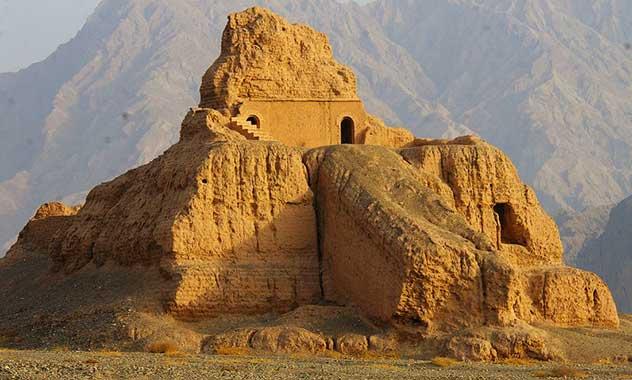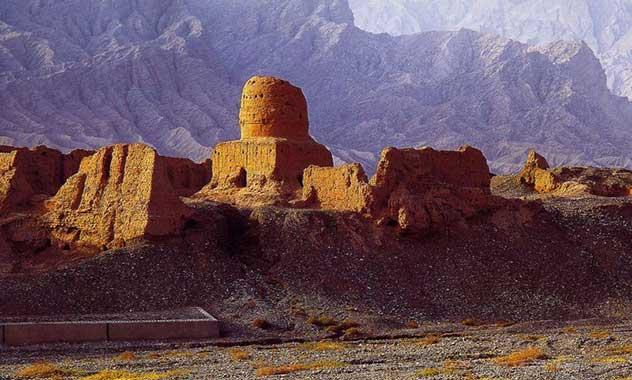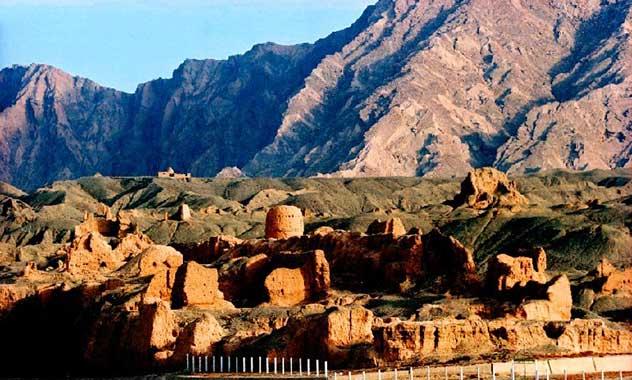The Site of Subashi Buddhist Temple is located on the ridges on both sides of Kucha River and 23 kilometers to the north of Kucha City. “Subashi” means “headwater of a river”. The site got its name from the geographical position. It is composed two parts divided by the river. With a lot of ruins of stupas, temples and grottoes from the Wei and Jin Dynasties to the end of Tang Dynasty, the site is the biggest site of Buddhist temples in Xinjiang. It is also believed to be the site of Queli Temple (Zhaoguli Temple) of Qiuci, Chinese and Uighurian characters, coins of the Tang Dynasty, Persian silver coins and wooden reliquary with figures of singing and dancing. The site is a unit of the historic and cultural relics under state protection now.
Kuqa has been a critical place on the North Road of the Western Silk Road since ancient times. Chinese and Western cultures meet here. This place has a long history and precious cultural relics, including the Kizil Thousand Buddha Caves, Shenmu Garden, and Guiz Ecological Park. There is also the ancient capital of Guiz, and in Shaya County not far away, there is the most beautiful Populus forest and Tarim River in China. Of course, there is also the ancient city of Subas, which we are going to introduce today, also known as the Great Temple of Zhaoli, which is one of the most famous monuments.
The East Temple of the Buddhist Temple is mainly composed of a Buddhist temple, a monk's house, and three towers in the north, south, and middle. The west temple has more buildings, mainly in the three towers in the north, south, and south. The north tower combined with Buddha caves, with residual murals and inscriptions on the turtle.
The Buddhist temple also has a high archeological value. At the beginning of the 20th century, A Japanese Adventure team excavated a reliquary box in the West Bank of Kuqa River. It is now exhibited in the National Museum of Tokyo, Japan. In 1907, Bohehe, France also found a circular reliquary box. 7 Each. In 1958, Mr. Huang Wenzhen of Peking University found a large number of potteries, copper coins, ironware, wooden slips, scrolls, etc. in the West Temple Hall. In 1978, the county's cultural relics department excavated a skeleton of a female corpse, baby bones, and other funerary items on the base of the middle tower of the West Temple. It can still be visited in the Kuche Guizi Museum now.







